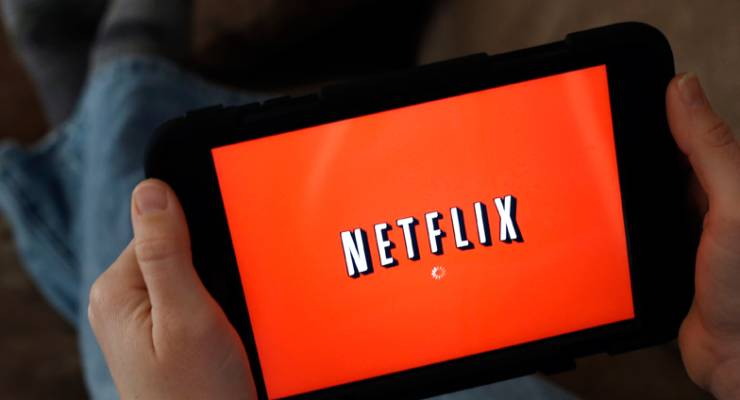
In October this year, a two-decade-old ministerial decision that creates regulatory distinctions between television and online streaming is set to expire. Back in 2000, Howard government communications minister Richard Alston made a determination that content streamed online was not a broadcast for the purposes of the Broadcasting Services Act. Now, the Morrison government has begun a review into the determination.
While the Alston determination seems like a relatively dry bit of regulatory jargon, it has big ramifications for what we watch and where and how we watch it. Under the current determination, content streamed online is subject to a far less stringent regulatory framework than content broadcast traditionally. Against the backdrop of a dramatic upheaval in viewing habits, with Australians increasingly ditching sit-down television for on-demand streaming, the bright-line distinctions in the Alston determination look increasingly antiquated, leaving ample room for potential reform.
How did the Alston determination come about?
The 2000 Alston determination on the Broadcasting Services Act 1992 excluded the following from the definition of “broadcasting service”:
[A] service that makes available television programs or radio programs using the internet, other than a service that delivers television programs or radio programs using the broadcasting services bands.
The clumsy wording of the determination was the result of a difficult series of compromises between television and internet interest groups, made at a time when streaming was a distant idea rather than the dominant form of entertainment consumption.
Alston’s proposed amendments to the act were incredibly generous to television moguls like Kerry Packer. They promised not to issue any more commercial broadcasting licenses until 2006 and placed onerous restrictions on datacasters, further entrenching the power of traditional television stations. Crucially, the moratorium on broadcasting licenses included services delivered over the internet, meaning internet providers could potentially be penalised for streaming content.
The promise of a review two years down the track wasn’t enough to appease incensed internet companies — the Internet Industry Association slammed the government’s laws as protecting the old economy at the expense of the new. Spooked by pressure from the internet lobby, Alston conducted a review on the fly, leading to the determination distinguishing streamed content from broadcast content.
What does the determination mean?
Since streaming services aren’t covered by the act, they are exempt from a host of regulatory requirements — such as ratings requirements, restrictions on when content can be broadcast, and complaints processes handled by the Australian Communications and Media Authority. Streaming companies are also not subject to local content quotas. The Broadcasting Services Act 1992 requires television channels to show 55% Australian content. Netflix and Stan have 1.6% and 11% local content respectively.
The courts have also sharpened the distinction between streaming and broadcasting, leading to outcomes that may be cumbersome for some broadcasters. For example, in 2013 the Federal Court confirmed that online simulcasts of radio programs were not broadcasts, meaning that royalties to artists had to be paid for both. A 2016 NSW Supreme Court decision also reinforced the distinction, hosing down a complaint by WIN against its metropolitan partners who were streaming in its regional markets, on the basis that streaming was not broadcasting.
What does the distinction mean today?
While the determination may have averted a political headache for the Coalition in 2000, it has led to an unwieldy distinction in the age of streaming.
Dr Marc C-Scott, a senior lecturer in screen media at Victoria University, says a key problem with Alston’s distinction is that it is a relic of a bygone era — 2000 is ancient history in the timeline of the internet.
“Thinking back to 2000, the internet was only just starting to pick up, and Google was only a year old,” C-Scott says.
According to C-Scott the distinction is particularly problematic in relation to sports rights and has led to inconsistent patchwork coverage between free to air, commercial television, and streaming services.
But most importantly, the boundaries between streaming and television are now so blurred that the distinction appears particularly anachronistic. Most major channels offer on-demand streaming of some sort, and Stan is owned by Nine.
Meanwhile, traditional broadcasters are increasingly pushing for greater regulation on streaming sites, particularly around local content rules, C-Scott says. “The broadcasters want Netflix to be subject to the same rules when it suits them”.
It’s unclear what the Morrison government’s review will throw up. Communications Minister Paul Fletcher, who worked as an adviser to Alston, has indicated the determination could be extended after October while the government works out a new framework.
Still, C-Scott is concerned that after so many years with an outdated regulatory framework, any update will be too little too late.
“They’re not going to solve all the problems, because it’s taken so long to get to this point,” he says.








In electronics, communications and media, governments are always c. half a decade behind happenings now, equivalent, say, to half a century in cars. Fletcher, my local member is brighter than the party leader types (dullards abound) but he will not get much going, much improvement, much legal clarification of guidance for future planning and controls. The big yankee corporations know the world’s dirty secrets, fully, lucratively, dangerously for some. How did it suddenly happen and who will control it for all of us?
Thank goodness Fifield is gone.
There’s something about the Comms Ministry that seems to turn each seat warmer’s brain to mush though that’s often hard to discern as they didn’t start with a lot.
Perhaps they’re forced to watch free-to-air programming from the commercial stations?